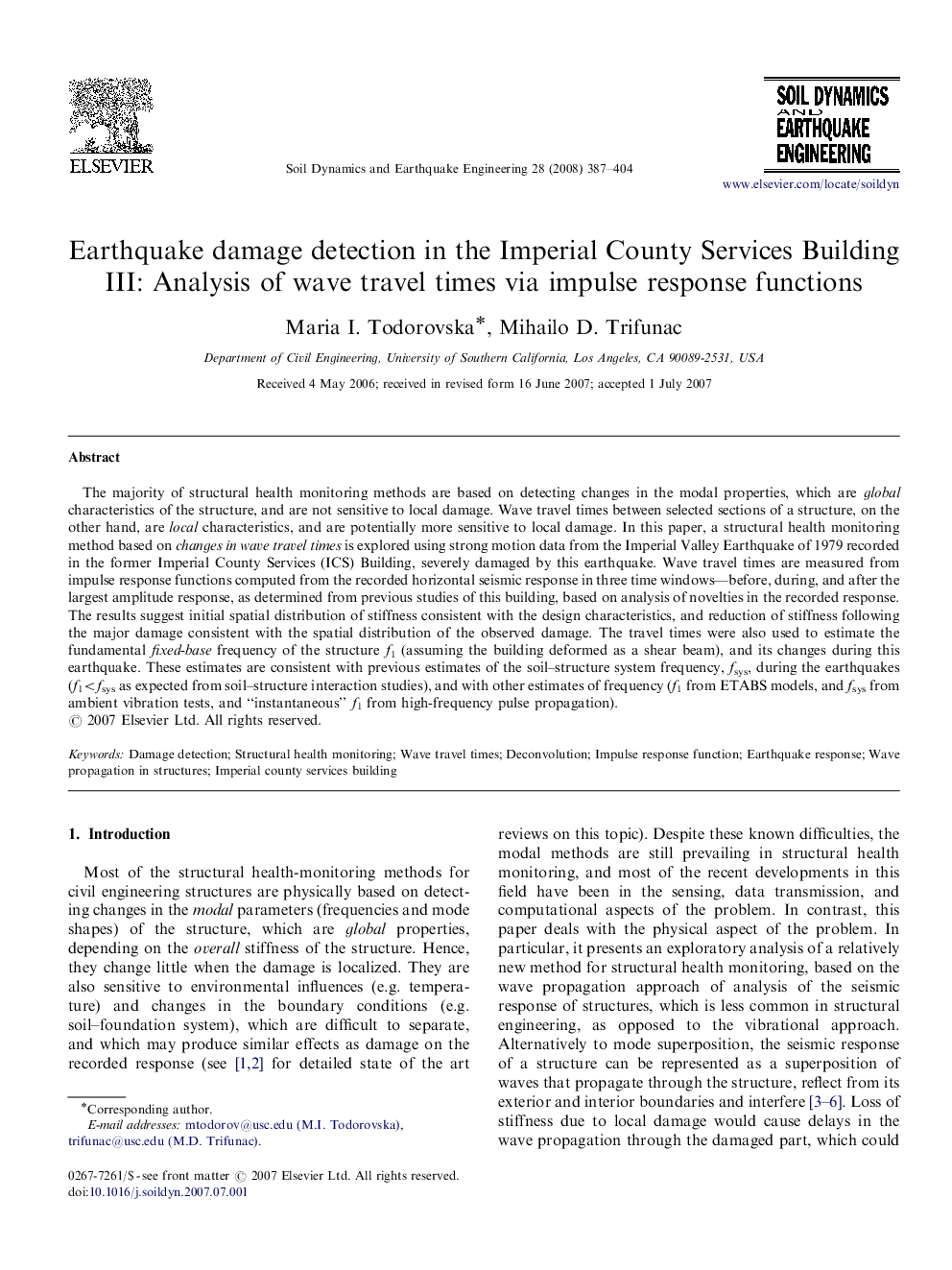| Article ID | Journal | Published Year | Pages | File Type |
|---|---|---|---|---|
| 305134 | Soil Dynamics and Earthquake Engineering | 2008 | 18 Pages |
The majority of structural health monitoring methods are based on detecting changes in the modal properties, which are global characteristics of the structure, and are not sensitive to local damage. Wave travel times between selected sections of a structure, on the other hand, are local characteristics, and are potentially more sensitive to local damage. In this paper, a structural health monitoring method based on changes in wave travel times is explored using strong motion data from the Imperial Valley Earthquake of 1979 recorded in the former Imperial County Services (ICS) Building, severely damaged by this earthquake. Wave travel times are measured from impulse response functions computed from the recorded horizontal seismic response in three time windows—before, during, and after the largest amplitude response, as determined from previous studies of this building, based on analysis of novelties in the recorded response. The results suggest initial spatial distribution of stiffness consistent with the design characteristics, and reduction of stiffness following the major damage consistent with the spatial distribution of the observed damage. The travel times were also used to estimate the fundamental fixed-base frequency of the structure f1 (assuming the building deformed as a shear beam), and its changes during this earthquake. These estimates are consistent with previous estimates of the soil–structure system frequency, fsys, during the earthquakes (f1
